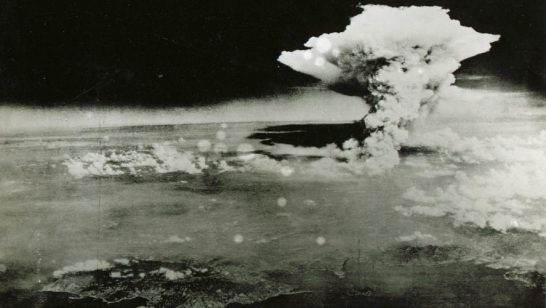
The 1968 Nuclear Non-Proliferation Treaty (NPT) celebrates the golden anniversary of its entry-into-force on 5 March 2020. About two months later, representatives from most of its 190 states parties will convene in New York for the agreement’s tenth Review Conference. A large celebration usually marks a golden anniversary, but there are reasons to believe that this year’s festivities will be subdued.
Last month, we participated in the 24th annual Wilton Park Conference on nuclear non-proliferation to get a handle on what awaits this spring. There was much to discuss, such as the deterioration of relations between the United States and Russia, an emerging arms race dynamic in the Pacific, the nuclear programmes of North Korea and Iran, and the lack of progress on arms control in the broader Middle East. Moreover, as one participant put it, there is “little common understanding” on what ought to be a priority at the upcoming conference. Some would paint this as concerning; others might have called it business as usual.
The atmosphere at Wilton Park might have been sober, but there was not a sense of overarching defeatism. For instance, participants described the treaty as “a common platform with common security benefits”, “resilient”, “delivering to its membership” and in its “most inclusive cycle” thus far. There is much truth in all of these statements. But it would be misguided, at the same time, to assume that it will maintain stability forever if optics replace substance. Most engines break down if they are not carefully maintained, and international treaties are no different.
Against this background, is it a catastrophe if the upcoming Review Conference fails to produce a consensus document? The answer is no, for now. There is no viable alternative to the NPT, and fears of the treaty’s collapse are entirely unjustified. As Kjølv Egeland wrote for the ELN: such collapse hypotheses only fuel “the thinking that nuclear restraint is a painful sacrifice.” Even if joint or reciprocal voluntary commitments can be made, those hoping for a meeting where detailed disarmament plans are laid out, or the Middle East’s troubles are solved, better temper their expectations.
The President-Designate’s seat remains empty ever since the election of Ambassador Rafael Grossi to Director General of the International Atomic Energy Agency (IAEA). In his stead, Ambassador Gustavo Zlauvinen, a former Argentinean Deputy Minister of Foreign Affairs has been nominated to hold the Presidency. The Conference President will be facing several challenges.
Cloudy skies …
Bilateral arms control between the US and Russia appears to be withering away, and Wilton Park participants were speaking openly about it potentially ending entirely in 2021 or 2026 if New START is somehow extended. With government officials scrambling from crisis to crisis, it seems that the former is more likely than the latter and there appears to be little to no capacity to deal with formulating new arms control rules.
As noted by Lynn Rusten in a recent commentary for the ELN, without New START extension there will be “no limits, no verification, and no transparency” on strategic arms between the two countries. What happens next is hard to predict, but some, like ELN Chairman Lord Browne, notes that it may well herald a “return to an unregulated nuclear arms competition that has not been seen since the early days of the Cold War.”
A lukewarm attempt by the Russian Federation to propose a moratorium on intermediate-range ballistic missiles have been met by Western scepticism (see the ELN resource page on the treaty for more information). At Wilton Park, discussions on these weapons systems were heated, and there appeared to be little appetite by the majority to engage constructively with the Russians on their proposal.
There are also challenges within the NPT. Participants focusing on the need to uphold healthy norms against the proliferation of nuclear weapons noted, with some degree of alarm, that challenges to the IAEA’s safeguards authority has continued unabated and looks set to escalate in the coming year.
What’s more, there are continuing regional challenges to the NPT. North Korea may well be buying time while increasing its nuclear weapons capabilities. Some at the conference argued that it might well have to be accepted as a “nuclear power” before long. The reduced implementation of the Joint Comprehensive Plan of Action (JCPOA) by all parties after US withdrawal led to genuine fears that the agreement may eventually collapse, taking Iran’s voluntary implementation of the IAEA Additional Protocol with it; or worse (albeit much less likely) even its signature on the NPT. As noted by ELN Fellow Maximilian Hoell in a policy brief published in late 2018, if Iran decides to forgo all obligations under the JCPOA, “the consequences range from extremely bad to catastrophic.”
If this was not enough to chew on at the upcoming golden anniversary, there are plenty of other unresolved matters to discuss. For instance, there has still been little progress on “the establishment of an effectively verifiable Middle East zone free of weapons of mass destruction,” called for in the 1995 Resolution on the Middle East, part of the decision to extend the NPT indefinitely. Wilton Park participants highlighted the United Nations-led conference on the Zone (and here, the United Kingdom and France’s participation last year was constructive).
There is also continuing dissatisfaction over the perceived lack of progress on nuclear disarmament overall. Conference arithmetics indicate that the Review Conference would need to find language to factually represent the Treaty on the Prohibition of Nuclear Weapons (TPNW). As of January 2020, nearly half of NPT members are also signed up to the TPNW, and this cannot be overlooked.
In the face of all this, participants at Wilton Park argued that States Parties need to reaffirm and demonstrate their commitments to all three pillars of the treaty. It may sound like a feeble response to a set of overwhelming challenges, akin to telling an unruly uncle at the dinner table to quiet down, but without a strong showing of multilateral support for the treaty and its normative advantages, the situation may well get worse in coming years.
… But not all is gloom and doom
The benefits of nuclear energy are sometimes buried under avalanches of news reports on weapons of mass destruction and catastrophic accidents. While many governments today rule out the build of new nuclear plants, very few deny the benefits that nuclear technology brings in areas such as health and nutrition.
The International Energy Agency (IEA) pointed out, “nuclear power is the second-largest source of low-carbon electricity today,” suggesting a continued role in the future. The IAEA has also published their views on how nuclear power contributes to several of the United Nation’s Sustainable Development Goals (SDGs). Interest in nuclear power may be diminished, but it is unlikely to go away in the mid-term.
Working for a good outcome on peaceful uses of nuclear energy will not solve the problems outlined above, but will underline that the treaty brings many benefits on a day-to-day basis, and these benefits are uniting the membership rather than driving it apart. However, there are challenges here too. Polarised debates over selective budget constraints are leading to an erosion of trust, and in turn, the need to evolve safeguards has been felt by some to be in direct competition with increasing needs for access to nuclear technology being met.
Keep calm and carry on
The 2015 NPT Review Conference opened with ministerial statements. Since this is a golden anniversary, remarks at the same level or higher would be appropriate this May. Although party hats may be a stretch, a code of conduct to not unnecessarily ruin any resulting positive atmospherics, such as through right-of-replies, during the subsequent proceedings could be established.
Most Wilton Park participants appeared to agree that the US and Russia could help substantially by announcing unilateral measures or at least plans for future bilateral arms control before the Review Conference begins, as this would help stabilise the NPT and satisfy the many that are fearful that there is no hope on the horizon.
Eventually, discord and division may well seriously damage the treaty. However, grievances have not escalated to that point yet, and there is time for a course correction. In the meanwhile, the upcoming conference is well advised to hold on and reaffirm those commitments that remain.
As one participant noted, action plans agreed in 2000 and 2010 are becoming embedded in national policies. These policies will not go away. We are “not prisoners of existing practice,” the participant said. This thought is reassuring. Even if 2020 ends on a dissonant note, there is a feeling the treaty’s foundation remains sound.
The opinions articulated above also do not necessarily reflect the position of the European Leadership Network or any of its members. The ELN’s aim is to encourage debates that will help develop Europe’s capacity to address pressing foreign, defence, and security challenges.
Image: Flickr, George Redgrave




